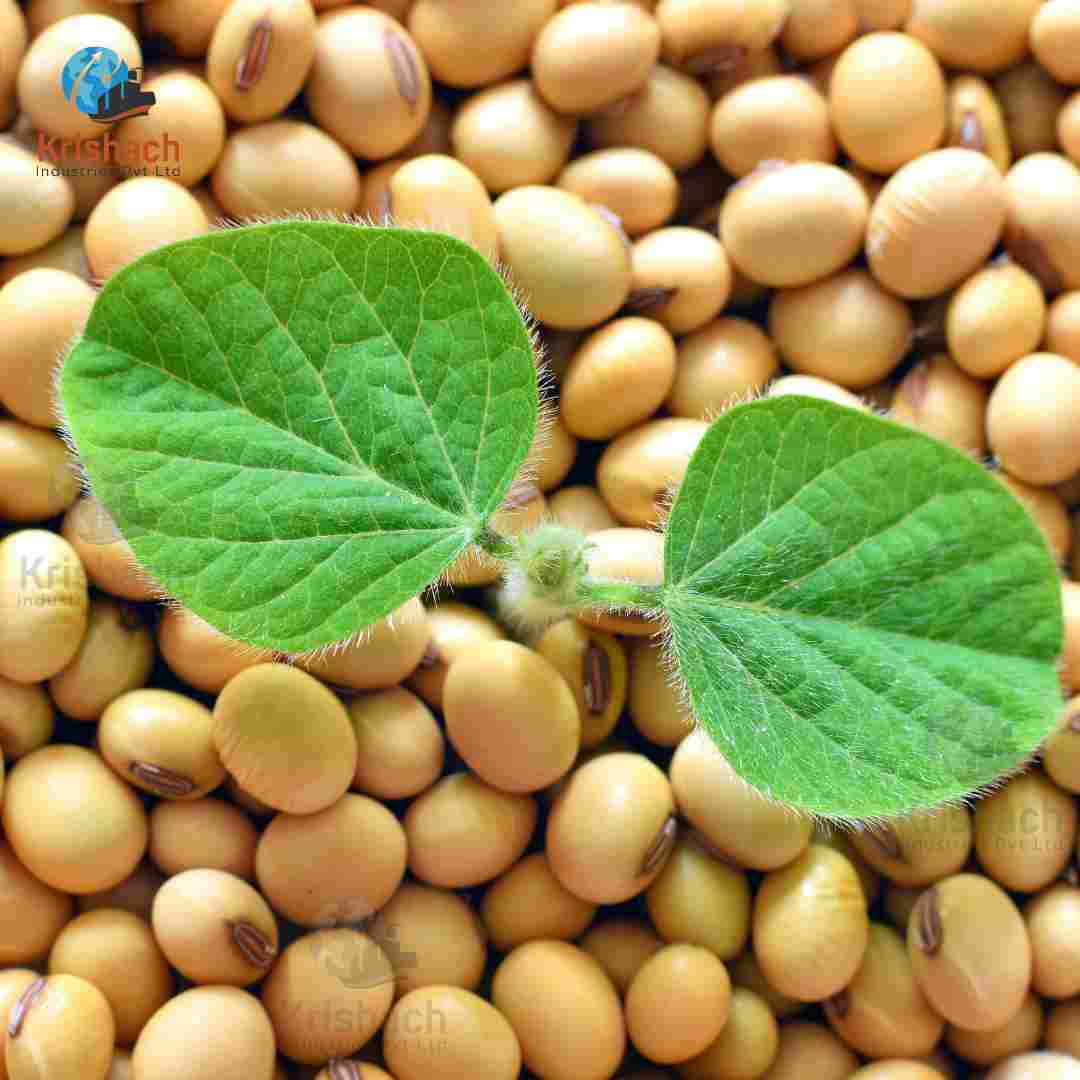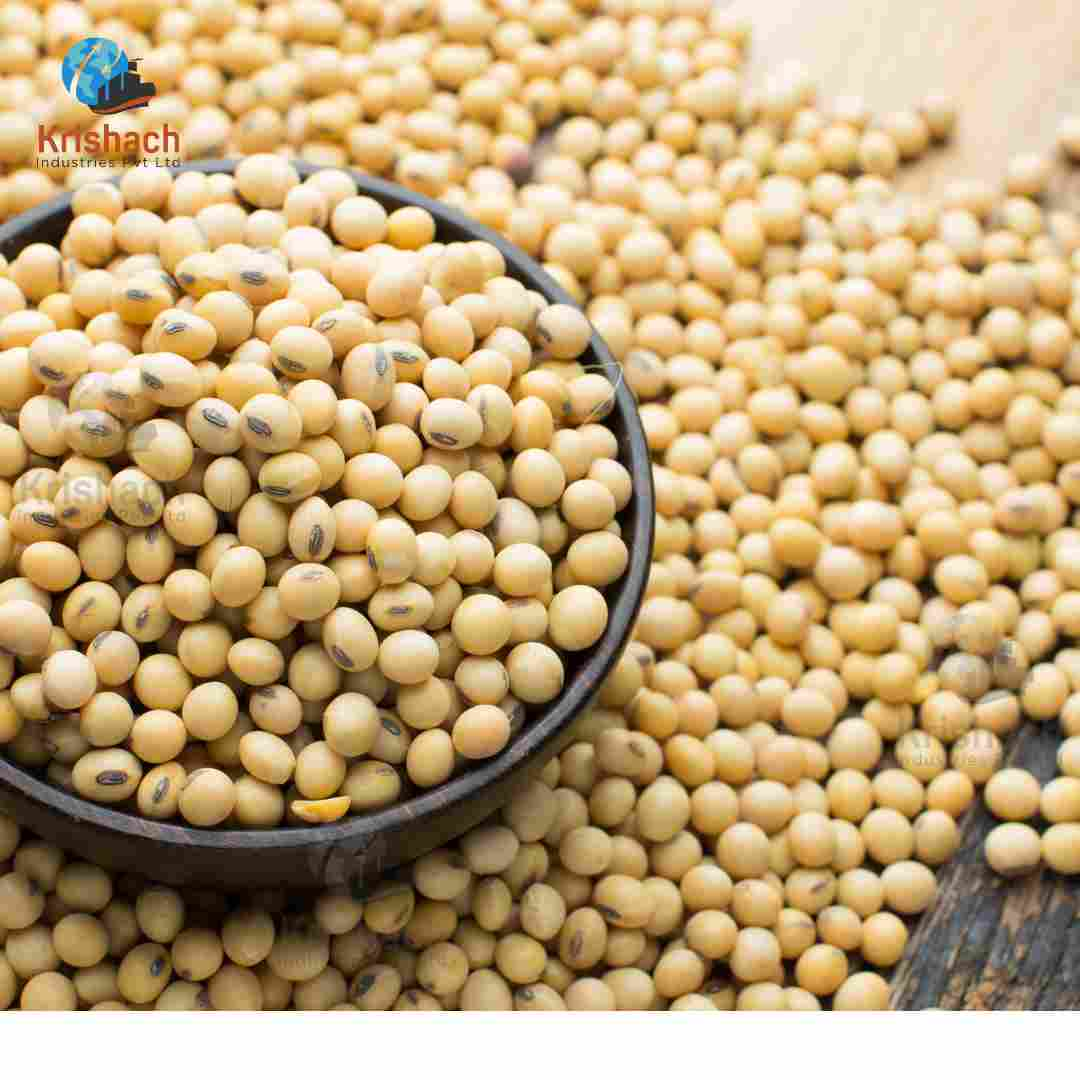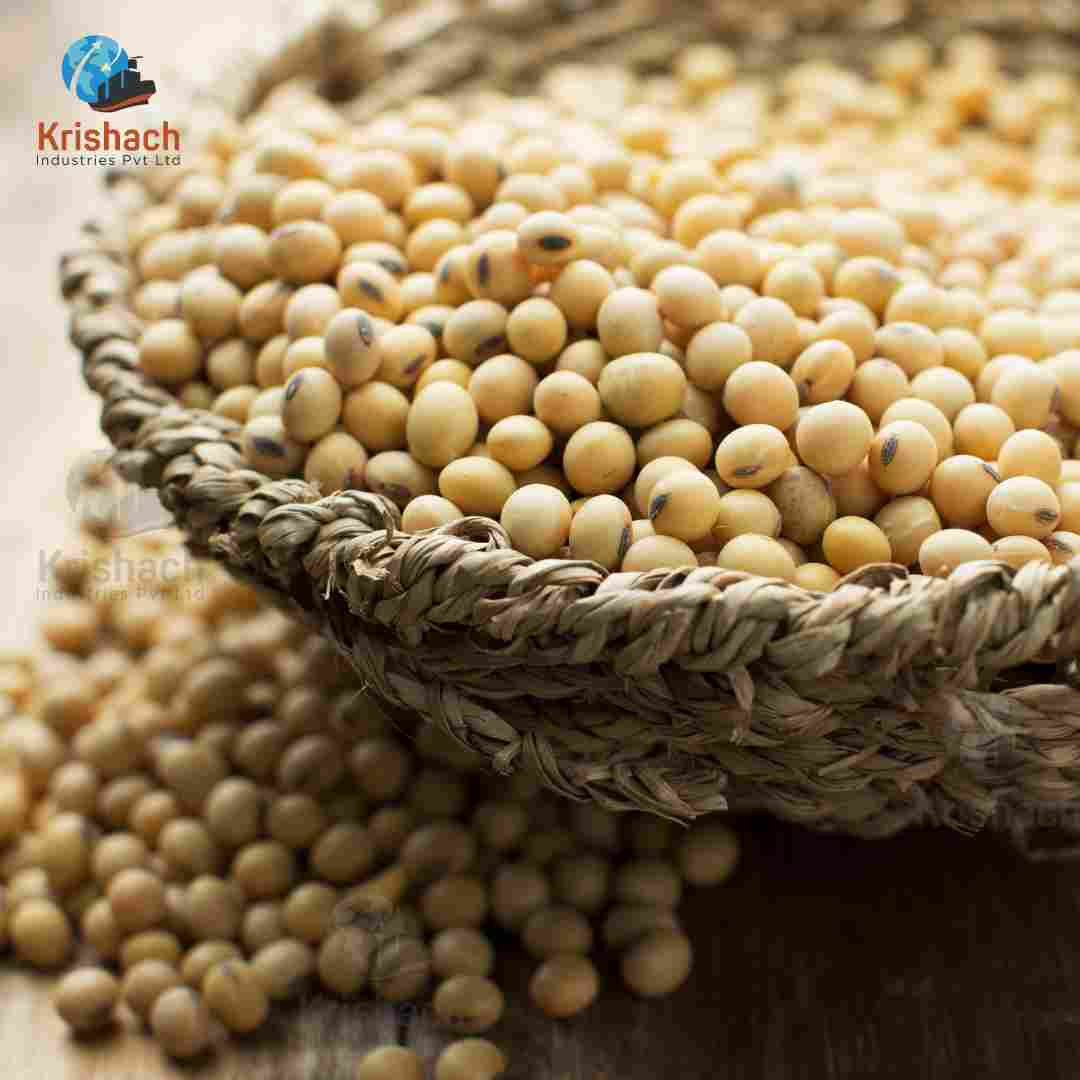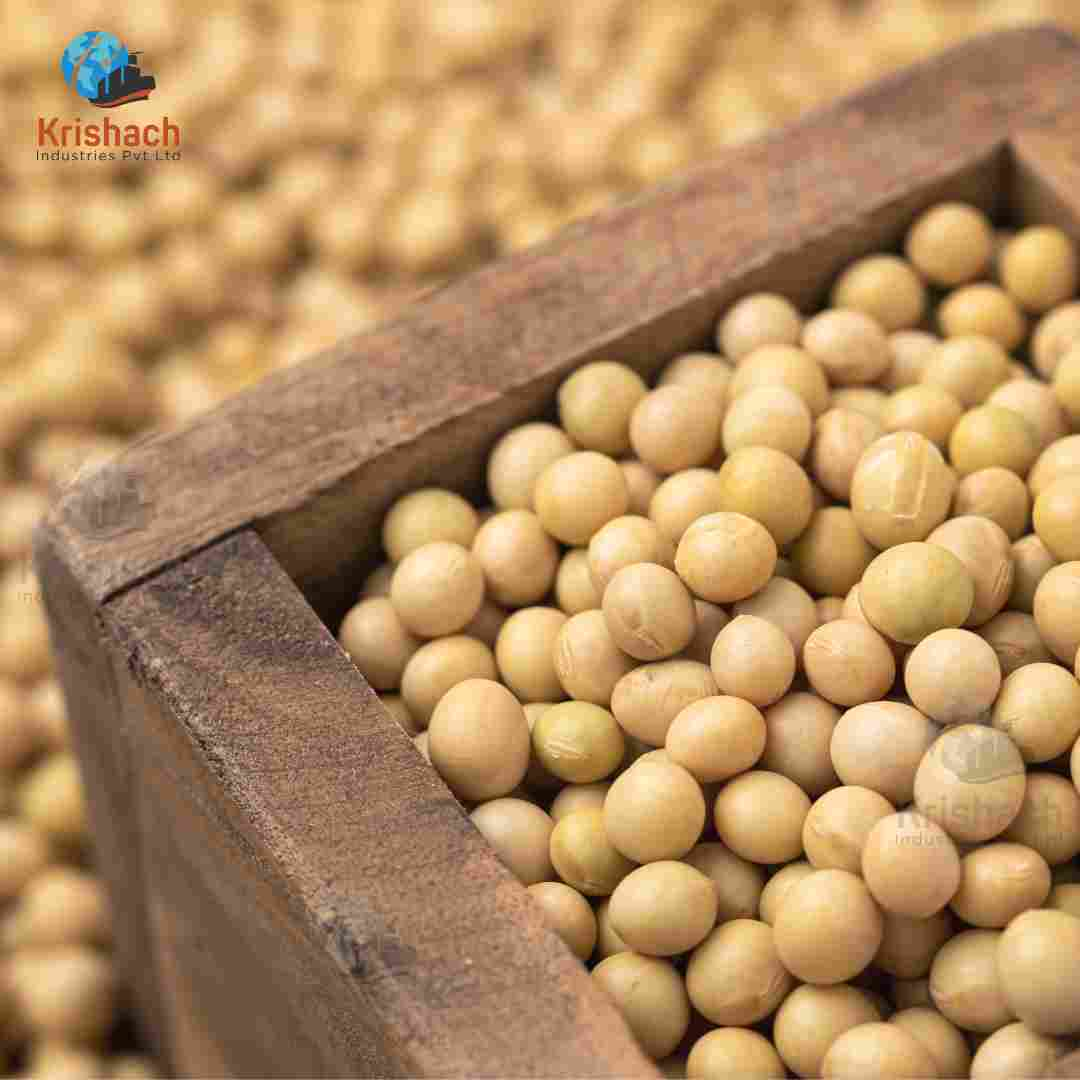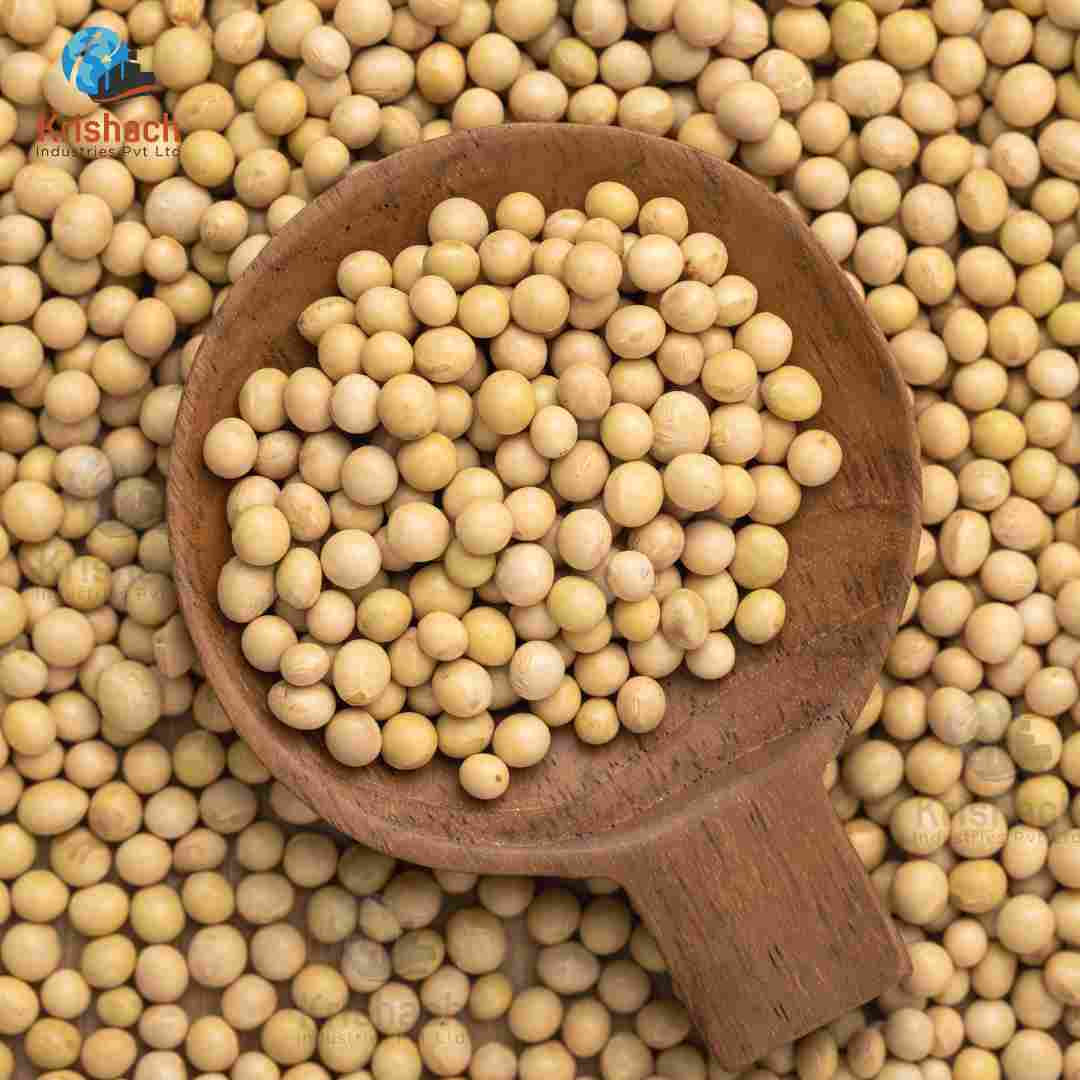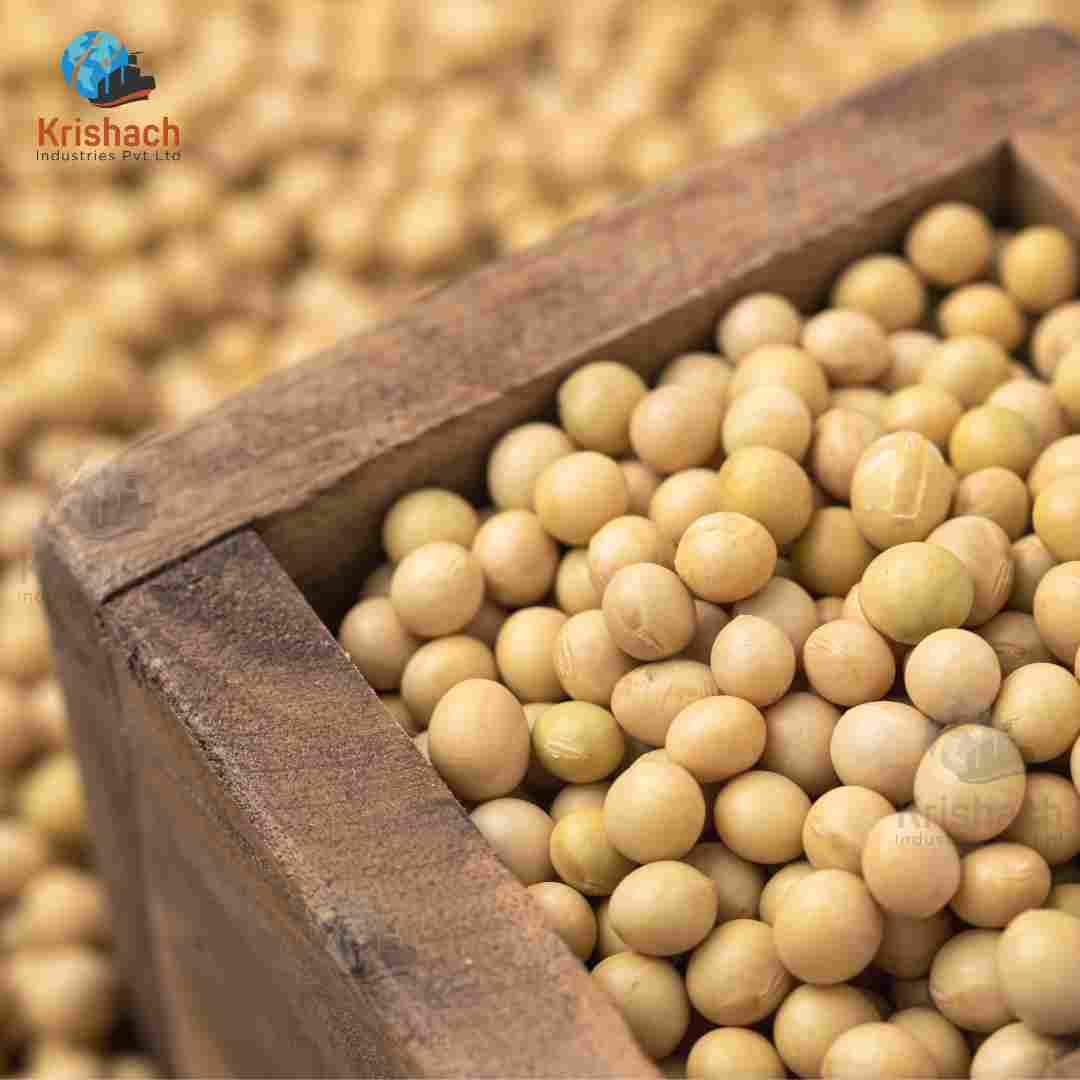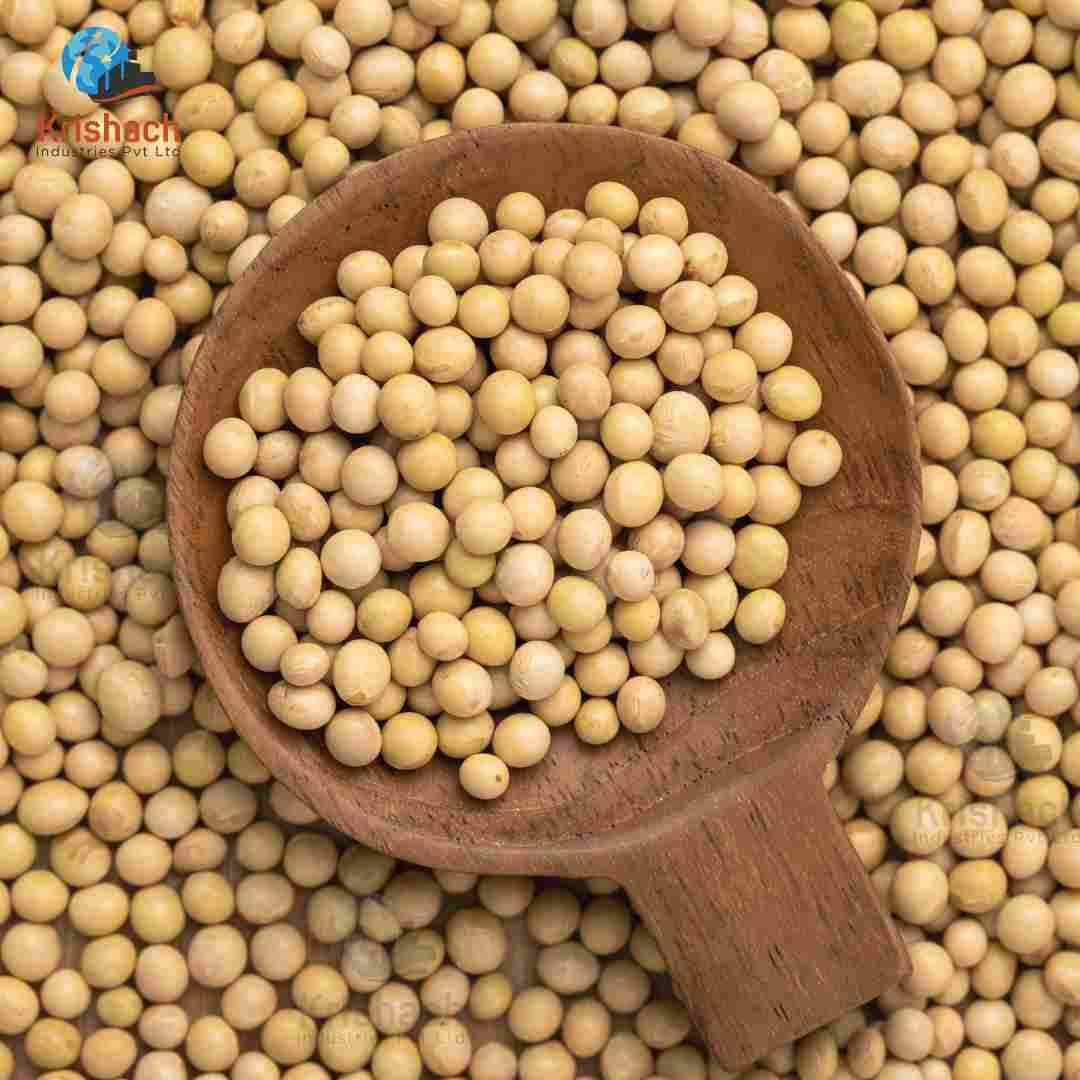Soybeans (Glycine max) are a type of legume native to East Asia but widely cultivated across the globe, including in India. They are valued for their high protein content and are used in a variety of food products and industrial applications. Soybeans are versatile, nutritious, and serve as a key source of plant-based protein.
Key Characteristics of Soybeans:
Appearance:
Shape: Small, round, or oval.
Size: Typically, 5-11 mm in diameter.
Colour: Varies depending on the variety; common types include yellow, black, brown, and green soybeans. The yellow variety is the most used for food production
Texture:
Raw: Hard and firm when uncooked.
Cooked: Softens when boiled, with a smooth and creamy texture, making it suitable for various culinary uses.
Aroma: Soybeans have a mild, earthy aroma that intensifies when cooked or processed.
Flavour: Raw soybeans have a mild, slightly nutty flavour. Their neutral taste allows them to absorb Flavors well, which is why they are often used in processed food products like tofu, soy milk, and tempeh.
Specification:
Culinary and Industrial Uses:
Food Products: Soybeans are widely processed into various food products, including:
Tofu: A soft, cheese-like product made from coagulated soy milk.
Soy Milk: A plant-based milk alternative made by soaking and grinding soybeans, then boiling and filtering the mixture.
Tempeh: A fermented soybean product that is rich in protein and has a firm texture.
Soy Sauce: A fermented condiment made from soybeans, used widely in Asian cuisines.
Edamame: Young, green soybeans typically boiled or steamed and eaten as a snack or appetizer.
Soy Flour: Made from ground soybeans and used in baking and as a protein supplement.
Animal Feed: Soybeans are also processed into soybean meal, a high-protein feed used in livestock and poultry farming.
Industrial Uses: Soybean oil, extracted from the beans, is used in cooking and for industrial purposes, including the production of biodiesel, soaps, and cosmetics.
Nutritional Value: soybeans are an excellent source of high-quality protein, making them a staple in vegetarian and vegan diets. They are also rich in essential amino acids, healthy fats, fiber, vitamins (such as B vitamins), and minerals (like iron, calcium, and magnesium). Additionally, soybeans contain isoflavones, which are known for their potential health benefits, including heart health and hormone regulation.
Benefits:
Soybeans are high in protein, healthy fats, vitamins, and minerals. They support heart health, bone health, and may help regulate hormones.
Cultivate Seasons for India:
Soybeans are typically sown in June-July and harvested in October-November.
Our Services
Reliable Sourcing:
Reliable sourcing of soybeans in India begins with identifying and partnering with farmers in key soybean-producing regions, such as Madhya Pradesh, Maharashtra, Rajasthan, and Andhra Pradesh. These areas have the ideal climate and soil conditions for high-quality soybean cultivation. To ensure premium quality, the focus is on sourcing from farms that adhere to sustainable agricultural practices, including crop rotation, organic farming, and the use of non-GMO seeds. Many suppliers work with farmers who follow Good Agricultural Practices (GAP) and are certified for sustainable farming methods. This guarantees that the soybeans are grown without harmful pesticides or chemicals and are harvested at the right maturity to maintain their nutritional integrity. Sourcing from trusted and certified suppliers ensures traceability and consistency in the quality of the beans.
Premium Quality Assurance:
The quality assurance process for soybeans in India involves stringent checks at every stage, from farm to final packaging. After harvest, the beans are tested for purity, moisture content, and absence of contaminants such as pesticides, heavy metals, and aflatoxins. Maintaining optimal moisture levels, usually below 13%, is crucial for preventing mold and spoilage during storage. The beans are also inspected for size, color uniformity, and protein content, which is a key indicator of quality. Advanced testing methods are employed to check for the presence of genetically modified organisms (GMOs) if non-GMO certification is required. Continuous monitoring, along with adherence to international food safety standards like ISO, HACCP, and FSSAI certifications, ensures that only premium-grade soybeans make it to the market.
Processes:
The processing of soybeans involves several critical steps to maintain their quality and safety. First, the soybeans are harvested when fully mature and left to dry in the field to reduce moisture content. After harvesting, the beans undergo mechanical cleaning to remove dirt, stones, and other impurities. They are then sorted by size and quality to ensure uniformity. If necessary, the soybeans are further dried to bring the moisture content to safe levels for long-term storage. Following this, the beans are graded based on size, protein content, and other quality parameters, with only the top-grade beans selected for premium products. Once graded, the soybeans are packaged in airtight, food-grade materials to preserve their freshness and prevent contamination during storage and transport. Finally, the beans are stored in cool, dry conditions to maintain their nutritional quality and prevent spoilage, ensuring they reach the market in optimal condition.
Packaging, Shipping & Delivery
Packaging:
Bags and Pouches:
For Soybeans, high-quality food-grade materials such as laminated multi-layer pouches (made of materials like PET, PE, BOPP, and Aluminum foil) are used. These bags are moisture-proof and help retain the freshness, flavor, and aroma of the spices. Zip-lock pouches, stand-up pouches, and resealable bags are also popular for smaller quantities.
Polypropylene (PP) Woven Bags:
These are the most common types of bags used for packaging large quantities (25 kg and 40 kg) of Soybeans. They are made of woven polypropylene material, which is strong, lightweight, and durable, providing excellent resistance to tearing and damage during handling and transport.
Laminated Bags:
For additional protection against moisture and humidity, PP woven bags can be laminated with a layer of plastic film. This lamination creates a barrier against moisture, ensuring the spices stay dry and fresh during transportation and storage.
Multi-Wall Paper Bags:
These bags consist of several layers of kraft paper, which provide strength and are often lined with a plastic or polyethylene layer to offer protection against moisture and humidity. They are environmentally friendly and widely used in many markets for exporting food products.
Vacuum-Sealed Packaging:
This type of packaging removes air from the package before sealing, which helps prevent oxidation and moisture build-up, preserving the quality and extending the shelf life of the spices.
Paper or Carton Boxes:
After the packaging, the smaller bags or pouches are placed in corrugated cardboard cartons or paper boxes. These cartons are sturdy, stackable, and protect the contents from physical damage during handling and transportation.
Palletization and Wrapping:
Cartons or sacks are often stacked on wooden or plastic pallets and wrapped with stretch film or shrink wrap. This provides stability, reduces the risk of damage during transport, and makes handling more efficient.
Export Documentation:
Handle all necessary export documentation, including phytosanitary certificates, certificates of origin, and any specific certifications required by the importing country.
Efficient Shipping:
Partner with reliable freight forwarders and logistics companies to ensure timely and safe delivery of goods. Offer multiple shipping options (air, sea, or land) based on customer preferences.




